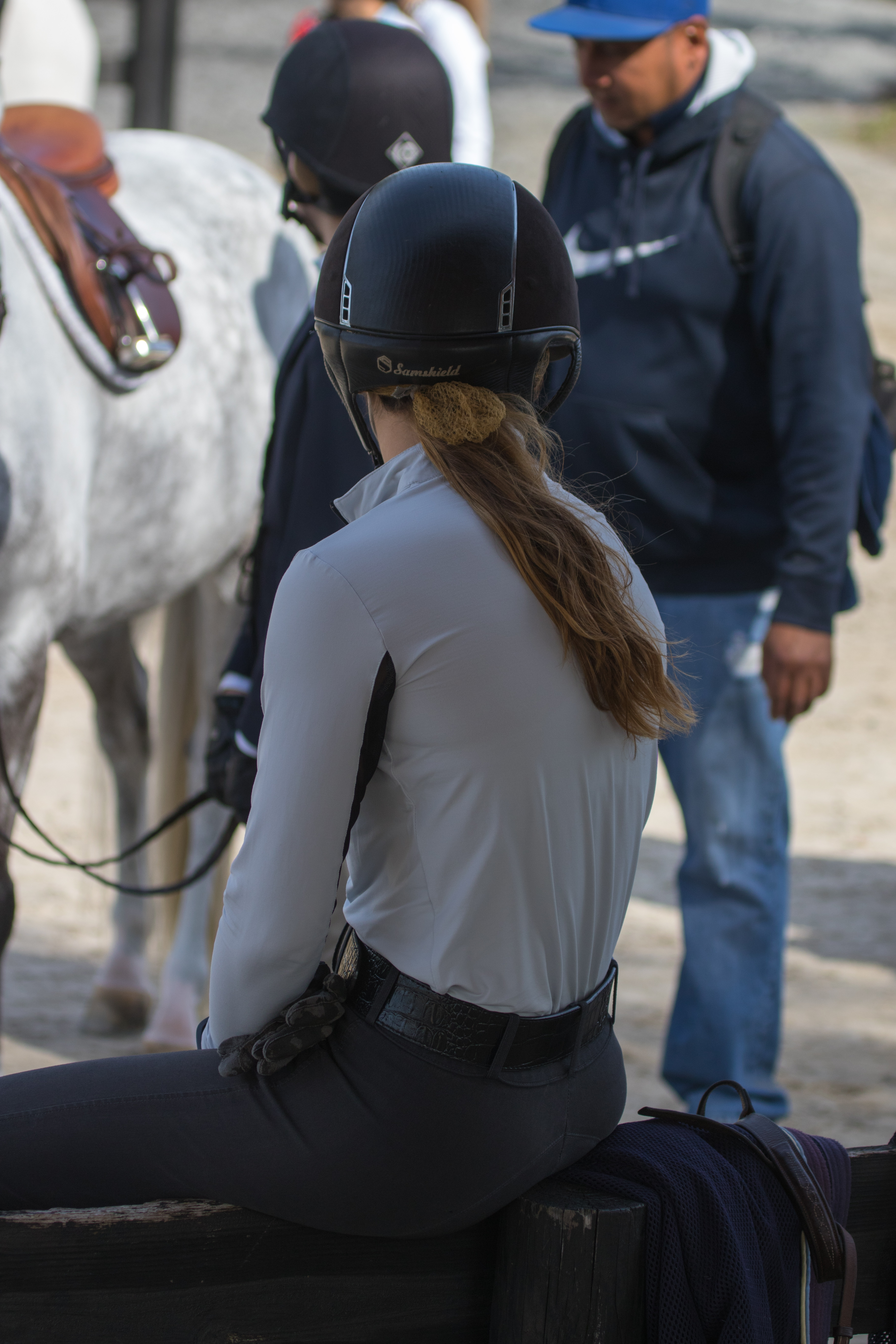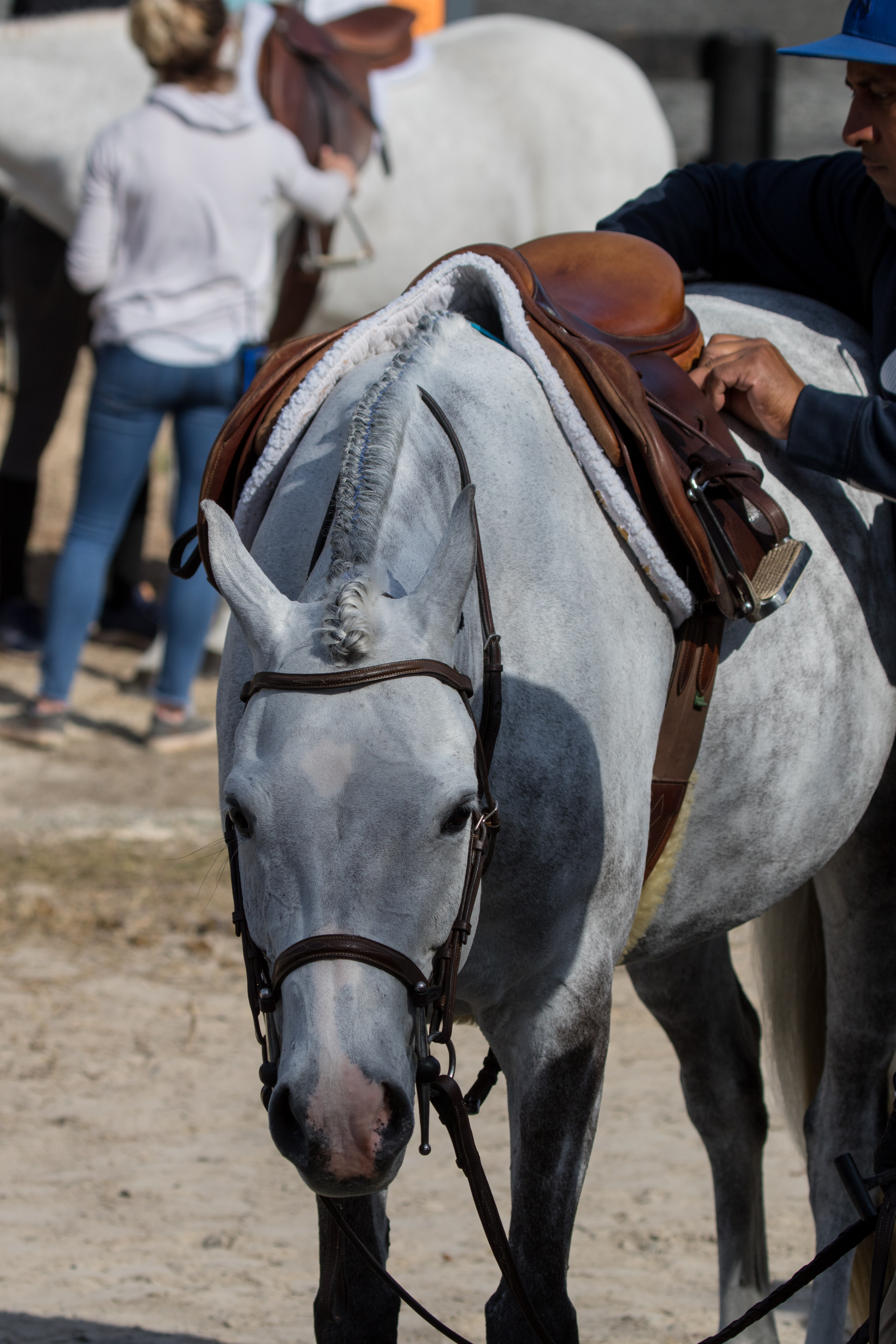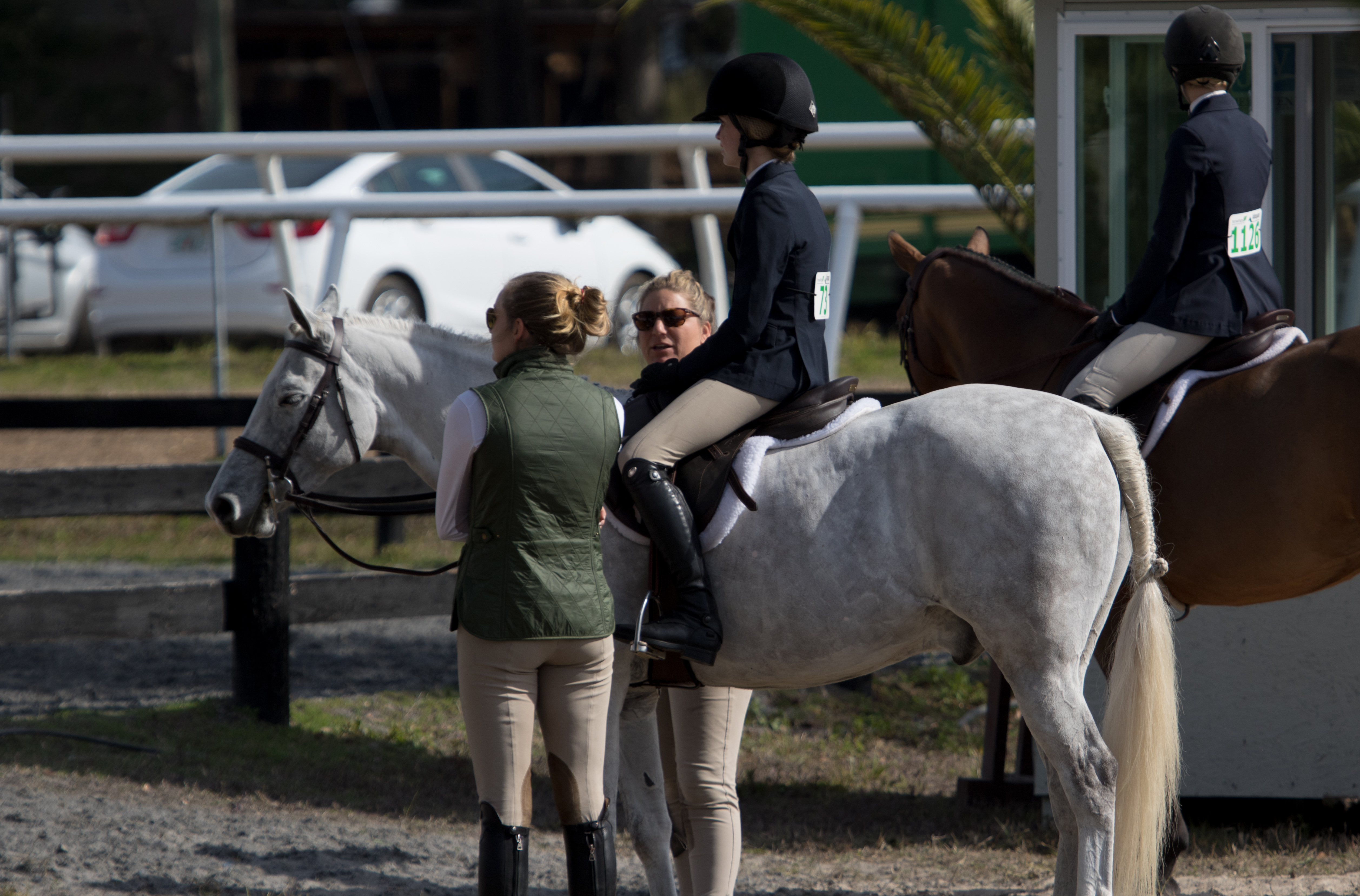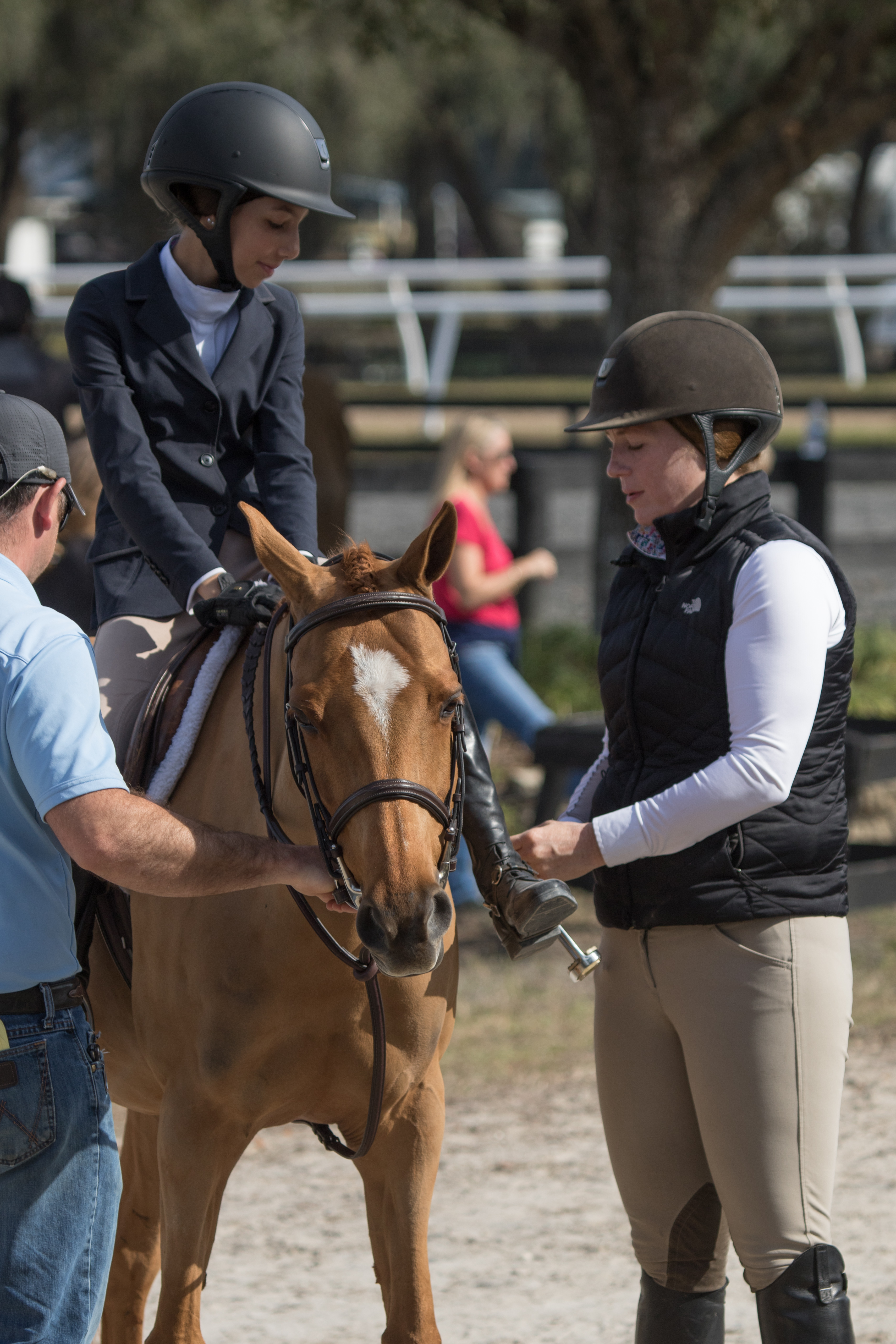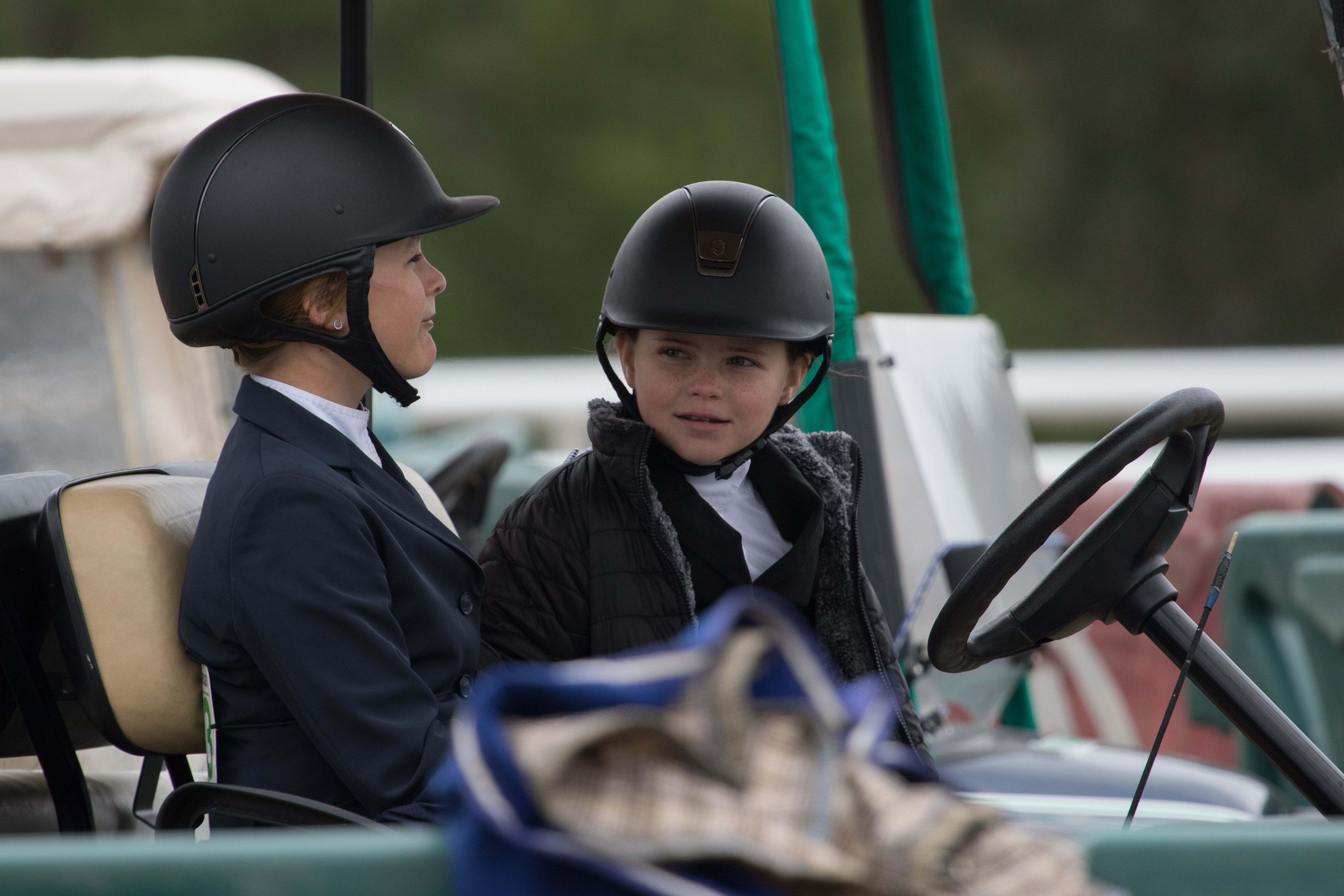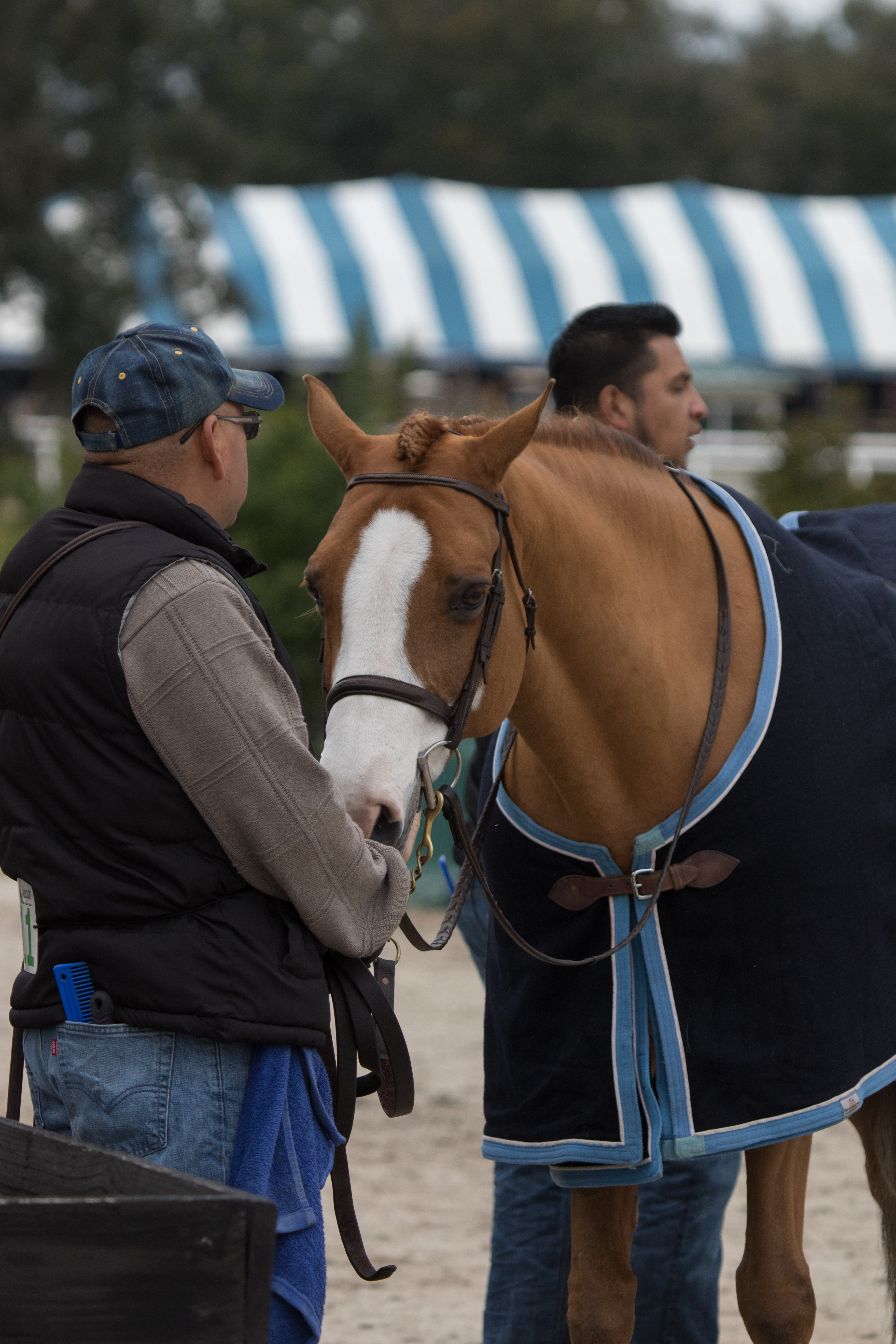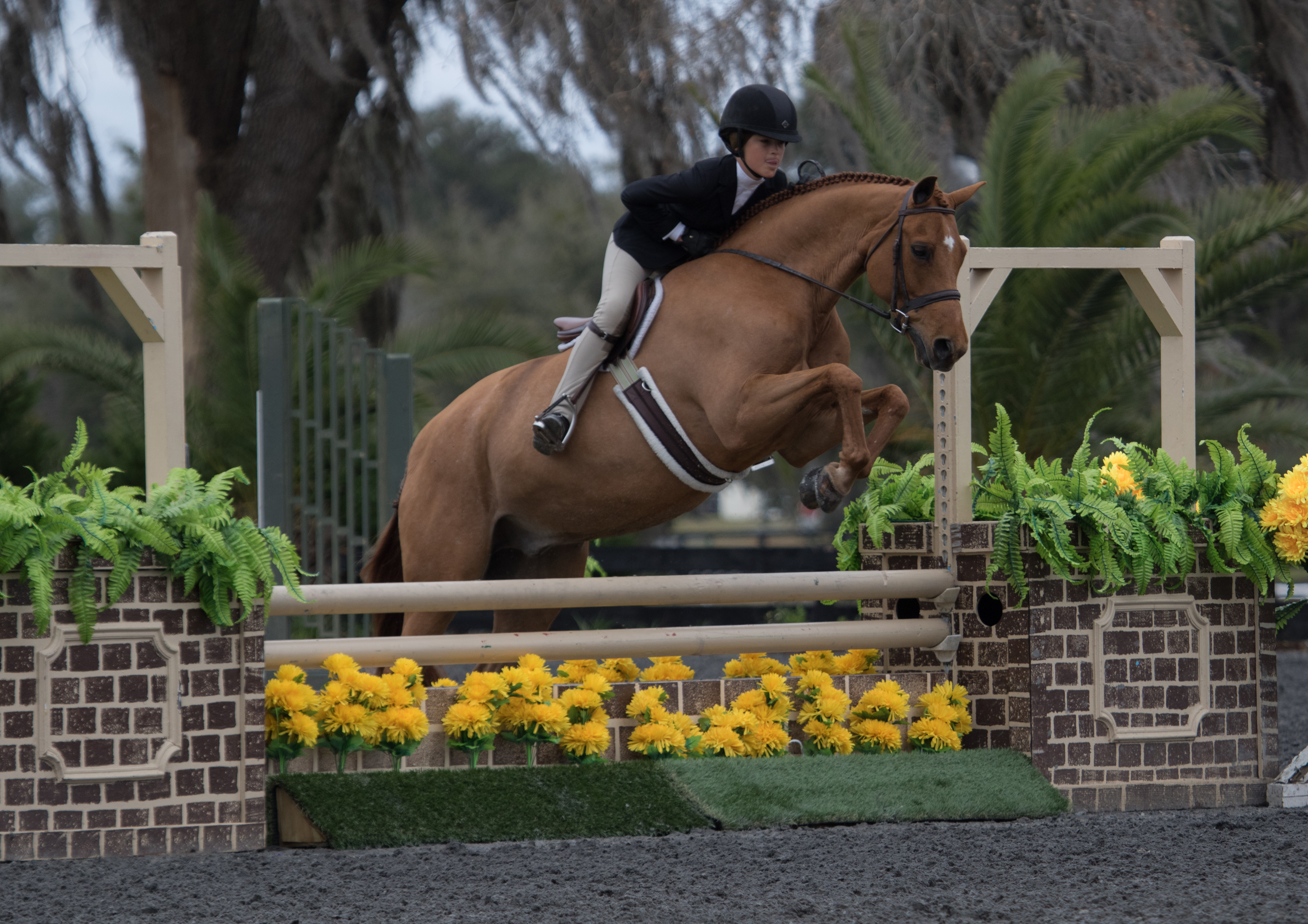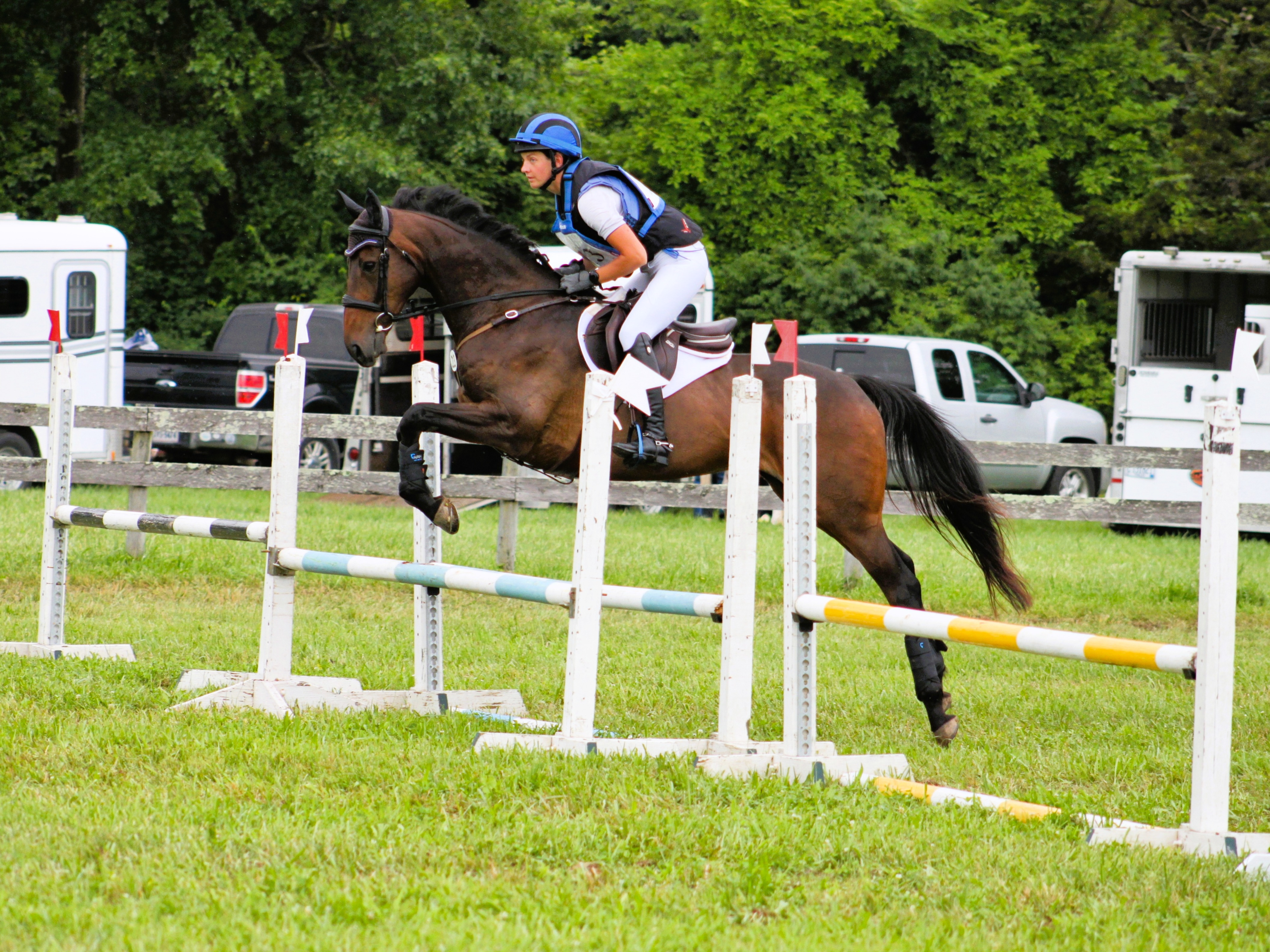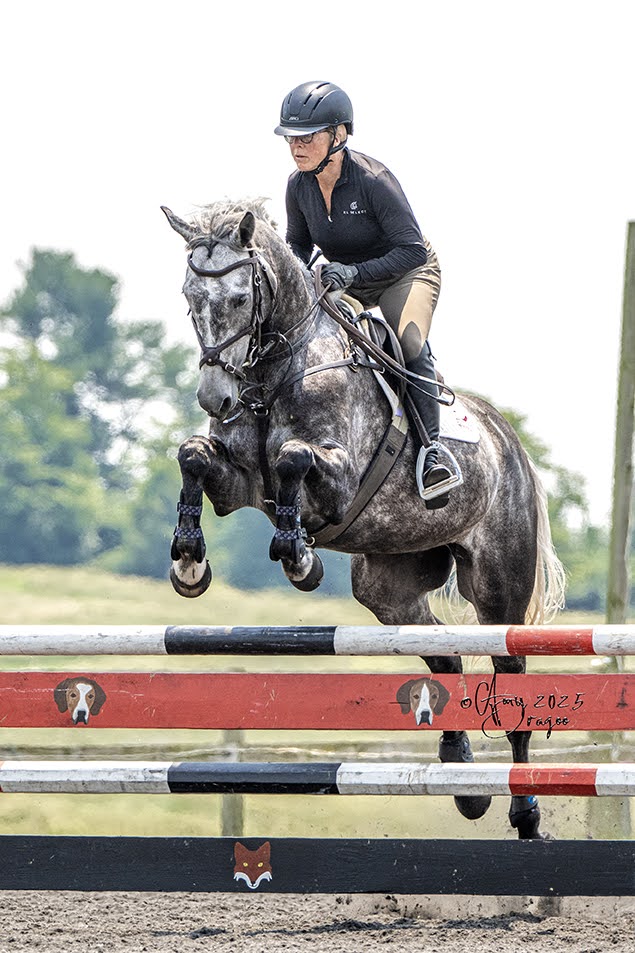
The annual Windchase working student polar dive. Photo courtesy of Phyllis Dawson.
The winter season is officially underway! If you’re looking for more barn time with a heaping helping of education, then a working student position might be the right fit for you.
Working for a rider is no walk in the park, but offers a unique opportunity to learn the ins and outs of training, riding and barn management from top professionals. Take a look below to check out the most current listings.
If you are looking for a working student, please email [email protected] and we will include your listing. This post will be updated periodically.
Phyllis Dawson (VA): Join the Windchase Team! Train with Phyllis Dawson (VA), Olympian and Level IV ICP certified instructor, and Cindy Anderson-Blank, current Advanced competitor and ICP Level III Instructor. We are looking for a long-term working student at Windchase beginning in the spring of 2019. Receive daily lessons, full board for your horse, experience riding multiple horses, housing, and shipping to competitions, a package with a value of over $3000 per month – in return for barn work and horse care. You will be part of a top quality Eventing stable, train with an Olympic rider, and learning how to run a successful business. Plenty of riding opportunities and daily instruction, and top class facilities. Check out our Web site: www.teamwindchase.com. We are in the heart of the Area II Eventing community. Excellent facilities and extensive cross-country courses. Bring your horse, ride and compete – or if you don’t have a horse take lessons on ours. We are looking for dedicated students who can commit to at least six months. Plus, we have a lot of fun! Follow Windchase Eventing on Facebook and Instagram. Contact Phyllis at [email protected]. Phyllis Dawson, Windchase, Hillsboro, VA (540) 668-6024 – stable, (540) 668-6548 – home, E-mail: [email protected].
Twin Rivers Ranch (CA): Andrea Baxter and Bec Braitling are looking for a working student. Their program ranges from top international horses all the way down to breaking babies. Looking for someone to help us manage the barn, groom, tack, hack horses, ect. Email [email protected] or [email protected].
Leslie Law and Lesley Grant-Law (FL): Law Eventing is looking to fill either a working student or paid position. Working student would have room for one horse and receive all the benefits of full training board. A paid position would include four days per week. Contact Lesley by phone 352-410-9734 or email, [email protected], for more information.
Light Speed Equestrian/Lizzy Jahnke (FL): Light Speed Equestrian has a unique working student position available in Ocala, FL for the Winter season from November 1- May 1. We are looking for an energetic, self starter with a good attitude. Eventing, Show Jumping or Dressage experience is a must. This position is primarily a riding/grooming position but will include stall cleaning three days a week and away shows.
This is a great opportunity to compete and train in the heart of the Eventing community
at a premiere facility complete with a full size GGT dressage arena, GGT show jump arena, XC schooling facility with a water complex, banks, and ditches, a full size track and 100+ acres of pristine riding land. Our working student will have the opportunity to travel to the big FEI shows throughout the winter as well as the local circuit of both events and show jumping.
On site housing in a beautiful, fully furnished apartment and board and training for one horse are offered as compensation. This position is a wonderful opportunity to ride a group of high quality event horses ranging from novice to 3 star level. Contact LSE’s trainer, Lizzy Jahnke. for more information or to submit an application email [email protected].
Elisa Wallace (GA): Working student opportunity with Wallace Eventing. I have a barn full Mustangs, thoroughbreds, upper level eventers and sometimes dragons. Age: 18+ would prefer older/mature. I’m full horse/stall wise but might consider a pasture board spot available. There are plenty of opportunities to ride as well.
Barn duties: mucking stalls, feeding blanketing, tack cleaning etc, grooming, hacking, and and and…. Ability to drive a manual is a plus since that is our muck truck and it makes life easier. Warning. Jasper, Ga is a small town with not much of a social life. But if you love horses and know this is a lifestyle not made for the weak then send me an email! Email me at [email protected]
Jacob Fletcher (FL): 501 Sport Horses is looking to add to the team! We are looking for a motivated individual who is interested in being a working student at our Ocala location for the winter season (Jan-April). Our working students have the opportunity to work on improving their riding and horsemanship skills under the watchful eye of a 3* level event rider Jacob Fletcher. Duties include: barn chores, facility maintenance, grooming and tacking up, as well as some grooming at competitions. We will provide housing for you and your horse plus lessons and one day off per week. Previous horse experience is a must. Please send resumes along with references to [email protected]
C Square Farm/Courtney Cooper (SC): Want to learn from the best in the sales business on how to have a business and improve your riding and stable management skills at the same time? Then we have the opportunity for you! Four-star eventer Courtney Cooper of C Square Farm has openings in her working student program.
Be prepared for long hours and demanding work. In return we provide housing for you and your horse, lessons, one day off per week, and a small stipend for the right person with previous experience. This is a position with room for growth and opportunity—you will get out of it what you put in.
Applicants must be ready to work as part of a team where everyone works towards fulfilling their goals.Based in Nottingham, PA April thru December. Winter season is spent in Aiken, SC.
Nilson Moreira da Silva and Laura VanderVliet (SC): Stop dreaming about it and do it!! If you are passionate about horses, believe you have the ability to succeed and are willing to work hard to make your dreams reality if given the chance, we are willing to give you the chance. Working student position available in Aiken, SC starting immediately with international event riders Nilson Moreira da Silva and Laura VanderVliet. Position offers housing, lessons, plenty of riding and schooling opportunities for capable rider, possible competition opportunities, grooming, training and management experience. Busy competition and training business in the heart of eventing. Board options available. Interested candidates should private message or email a brief summary of experience and references to [email protected].
Jane Sleeper (SC): Interviewing for an eager working student to join Jane Sleeper Eventing! Bring your horse, ride & compete our horses, and learn all aspects of working, training, competing, and caring for sporthorses. Looking for Fall & Winter (Aiken SC) Sessions. Come train with ICP Gold Level YEH Professional Horse Trainer and learn from Upper Level rider. Join the Action! 603-718-4446/[email protected].
















